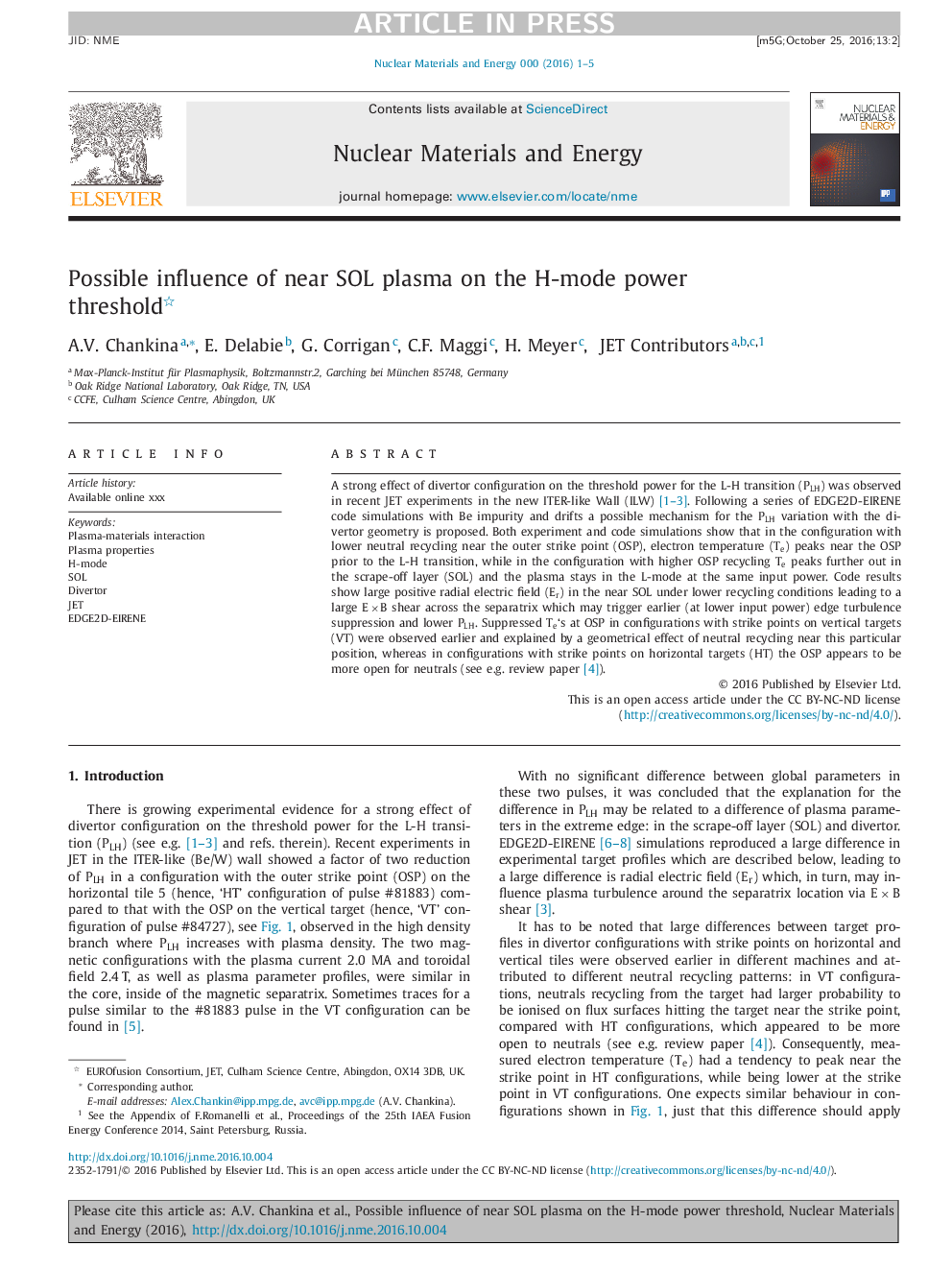| Article ID | Journal | Published Year | Pages | File Type |
|---|---|---|---|---|
| 7987451 | Nuclear Materials and Energy | 2017 | 5 Pages |
Abstract
A strong effect of divertor configuration on the threshold power for the L-H transition (PLH) was observed in recent JET experiments in the new ITER-like Wall (ILW) [1], [2], [3]. Following a series of EDGE2D-EIRENE code simulations with Be impurity and drifts a possible mechanism for the PLH variation with the divertor geometry is proposed. Both experiment and code simulations show that in the configuration with lower neutral recycling near the outer strike point (OSP), electron temperature (Te) peaks near the OSP prior to the L-H transition, while in the configuration with higher OSP recycling Te peaks further out in the scrape-off layer (SOL) and the plasma stays in the L-mode at the same input power. Code results show large positive radial electric field (Er) in the near SOL under lower recycling conditions leading to a large EÂ ÃÂ B shear across the separatrix which may trigger earlier (at lower input power) edge turbulence suppression and lower PLH. Suppressed Te's at OSP in configurations with strike points on vertical targets (VT) were observed earlier and explained by a geometrical effect of neutral recycling near this particular position, whereas in configurations with strike points on horizontal targets (HT) the OSP appears to be more open for neutrals (see e.g. review paper [4]).
Related Topics
Physical Sciences and Engineering
Energy
Nuclear Energy and Engineering
Authors
A.V. Chankina, E. Delabie, G. Corrigan, C.F. Maggi, H. Meyer, JET Contributors JET Contributors,
